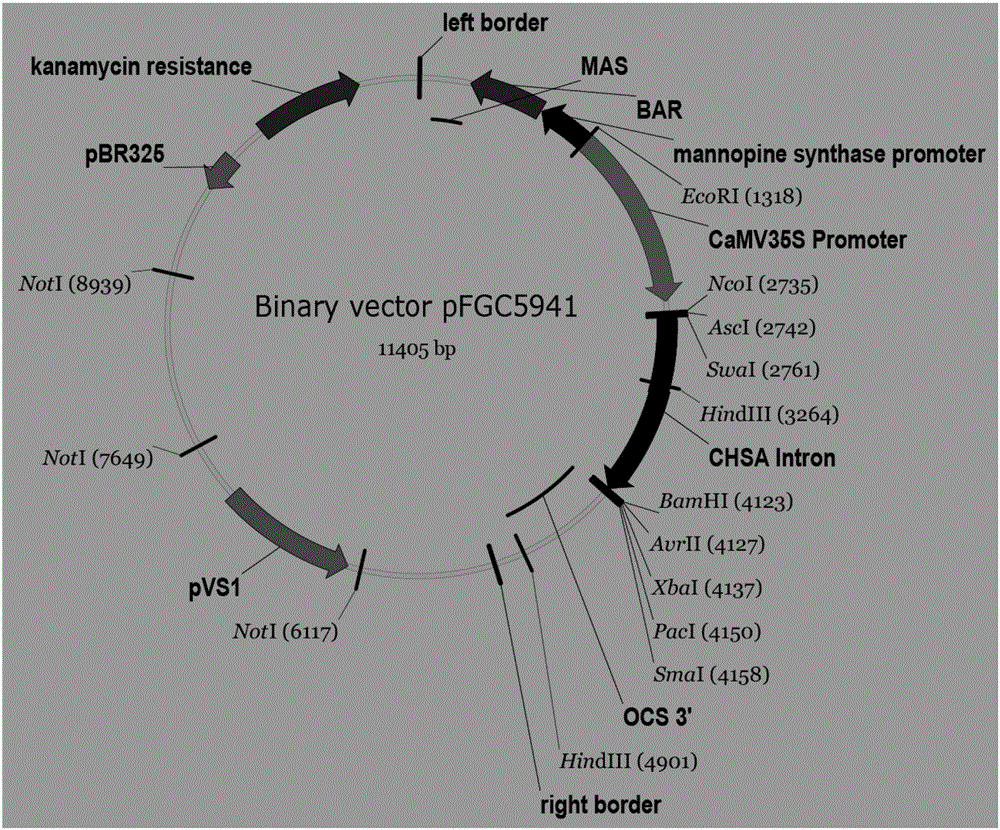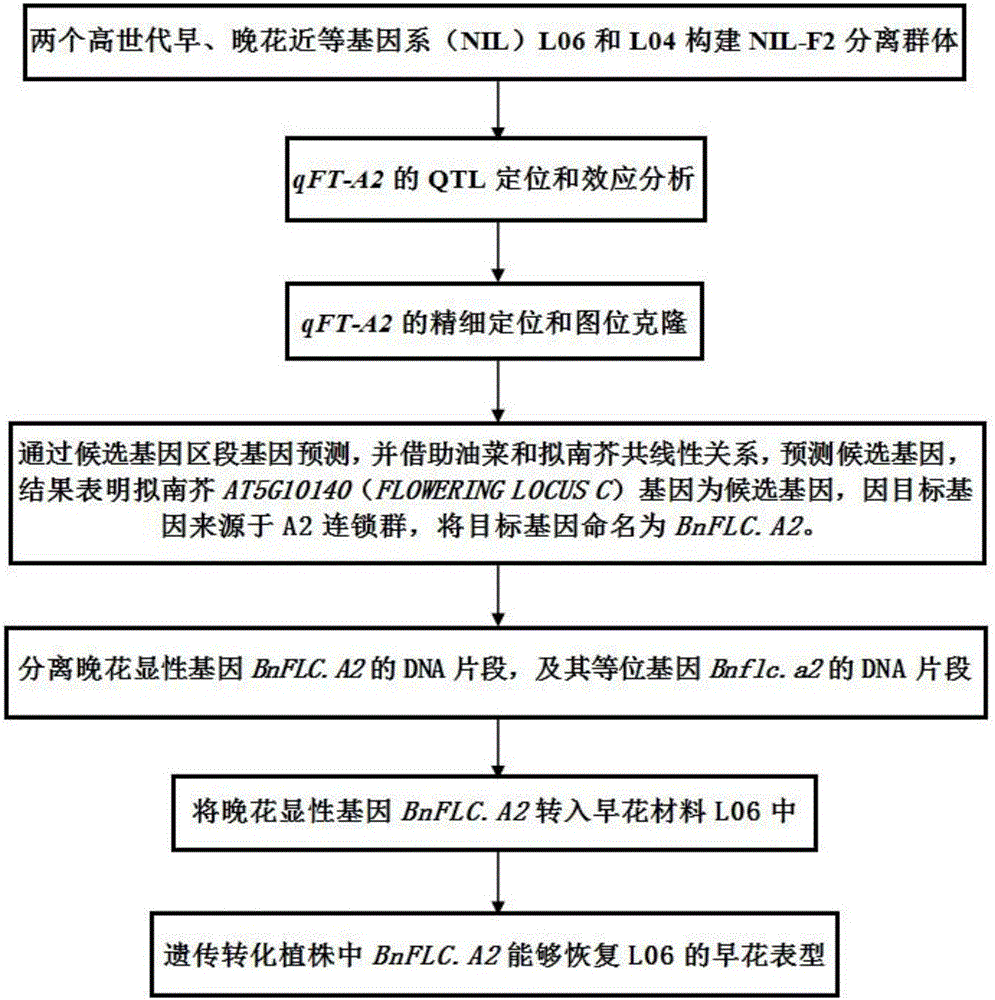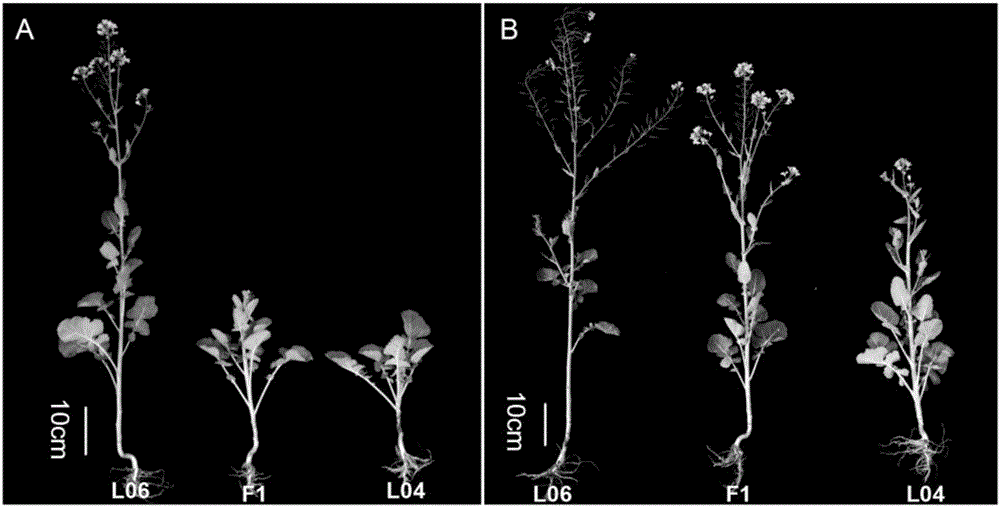Cloning and application of flowering period BnFLC.A2 and Bnflc.a2 genes of brassica napus
A technology of Brassica napus and genes, applied in the fields of application, genetic engineering, plant genetic improvement, etc., can solve few problems such as
- Summary
- Abstract
- Description
- Claims
- Application Information
AI Technical Summary
Problems solved by technology
Method used
Image
Examples
Embodiment 1
[0029] Example 1: Construction of a near-isogenic line of the BnFLC.A2 gene and preliminary mapping of the gene
[0030] 1. Experimental materials
[0031] The materials used in this experiment are high-generation near-isogenic lines of Brassica napus: late-flowering material L04 and early-flowering material L06 ( figure 2 ). Source of material: Two pure lines of Brassica napus, HZ396E and Y106, were used as the original parents to cross, and HZ396E was used as the recurrent parent. After five generations of continuous backcrossing, a high-generation segregating population was obtained. It was found that the segregation at the flowering stage was selected. We selected an early-flowering homozygous type material and named L06 and a late-flowering homozygous material and named L04. Under the winter rapeseed environment, the NILs material has a stable flowering period for many years. The early-flowering material L06 blooms about 93 days after sowing, while the late-flowering p...
Embodiment 2
[0048] Example 2: Fine mapping of the late-flowering gene BnFLC.A2
[0049] 1. Development of molecular markers
[0050] According to the initial mapping results, we developed 119 pairs of SSR markers for the physical interval of about 1Mb in the interval between the farthest markers SRA2-6 and SRA2-31 on both sides, using the cabbage genome A2 chromosome sequence as the reference sequence. Screening of polymorphic markers by parents L06 and L04 can be used for large population genotype analysis. Through marker screening, a total of 28 pairs of polymorphic SSR markers were screened. From these 28 pairs of SSR markers, 10 pairs of SSR markers evenly distributed in the target interval and with better banding patterns were selected for subsequent population analysis and identification of genotypes of exchanged individual plants. Sequence information for these markers is shown in Table 5.
[0051] Table 5. Fine-mapping marker sequences
[0052]
[0053]
[0054] 2. Fine m...
Embodiment 3
[0056] Example 3: Comparative sequencing to determine natural variation among BnFLC.A2 alleles
[0057] In order to further confirm the candidate genes, we designed specific primers based on the candidate gene BnaA02g00370D gene and its upstream and downstream reference sequences in the target region of the A2 chromosome of Brassica napus, respectively, to amplify the coding region of the target candidate gene BnFLC.A2 and its upstream promoter region and downstream range. We used these primers to analyze the parents L04 and L06, in which the marker STA2-6L / STA2-6R amplified the BnFLC. A2 gene upstream of the start codon all the way to the last exon of the previous gene, the theoretical size is about 2.3kb ;STA2-8L / STA2-8R amplified the BnFLC.A2 gene downstream of the stop codon to the first exon of the next gene, with a theoretical size of about 2.4kb ( Image 6 A); We designed two pairs of primers to amplify the coding region of BnFLC.A2, namely STA2-55L / STA2-1R (theoretica...
PUM
 Login to View More
Login to View More Abstract
Description
Claims
Application Information
 Login to View More
Login to View More - R&D
- Intellectual Property
- Life Sciences
- Materials
- Tech Scout
- Unparalleled Data Quality
- Higher Quality Content
- 60% Fewer Hallucinations
Browse by: Latest US Patents, China's latest patents, Technical Efficacy Thesaurus, Application Domain, Technology Topic, Popular Technical Reports.
© 2025 PatSnap. All rights reserved.Legal|Privacy policy|Modern Slavery Act Transparency Statement|Sitemap|About US| Contact US: help@patsnap.com



